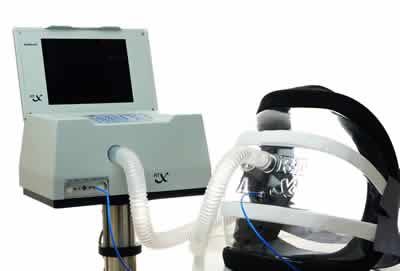Full Description
Breathing consists of twophases: Inspiration and Expiration. During the inspiration phase the diaphragm moves downwards, while the rib muscles pull the the ribs out expanding the chest. This expands the lungs and generates a lower pressure inside the chest cavity than outside.This decreases the pressure below normal atmospheric pressure, causing air to rush in through the nose and mouth and into the lungs. This is termed negative pressure breathing. When we breathe out the muscles relax, the diaphragm moves up and in, and this pushes air out of the lungs. Biphasic Cuirass Ventilation works in the same manner, sucking the diaphragm down and creating negative pressure in the chest – the Inspiratory Phase. However, what makes BCV so special is that active phase that uses positive pressure to push air back out of the lungs – the Expiratory Phase.
BCV Provides
Biphasic Cuirass Ventilation provides an efficient and effective method of non-invasive external ventilation and is a real alternative to traditional forms of positive pressure ventilation (PPV), such NIV, BiPAP®, IPPV (tracheosomty, intubation).
BCV Works
As ventilation is biphasic, it is possible to achieve both higher tidal volumes (negative inspiratory tidal volume and positive expiratory tidal volume) and higher frequencies ranging from 6 to 1200 breaths per minute. All while allowing the user to have proper and complete control over I:E ratio, without having to depend on passive recoil of the patient. Biphasic Cuirass Ventilation has been proven to reduce mortality rates, increase patient comfort, and avoid many of the harmful side-effects associated with other existing forms of ventilation techniques.
BCV has been used on patients with:
– Acute Respiratory Failure
– Neuromuscular (E.g. SMA,Duchene’s etc)
– Problems with Weaning from PPV
– Cystic Fibrosis (CF) and those who require chest physiotherapy
– Asthma
– Chronic Obstructive Pulmonary Disease (COPD)
– Head and Spinal Injuries
– Ventilation during anesthesia in Ear Nose and Throat (ENT) Procedures
– Aids Related Lung Disease
– Ventilation Post-‐Operation (E.g. post-‐coronary bypass, Fontan, Fallot, post-‐pneumonectomy)




Reviews
There are no reviews yet.